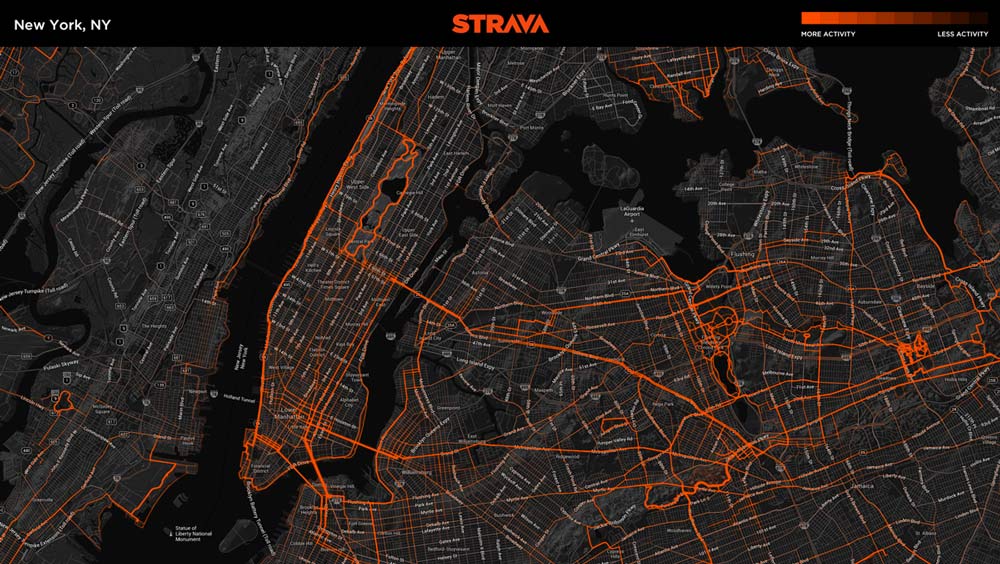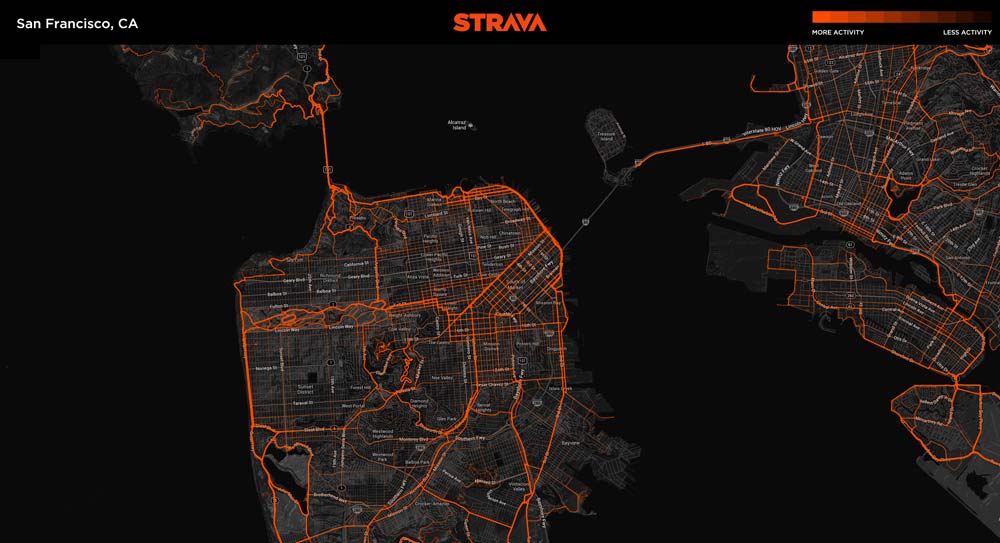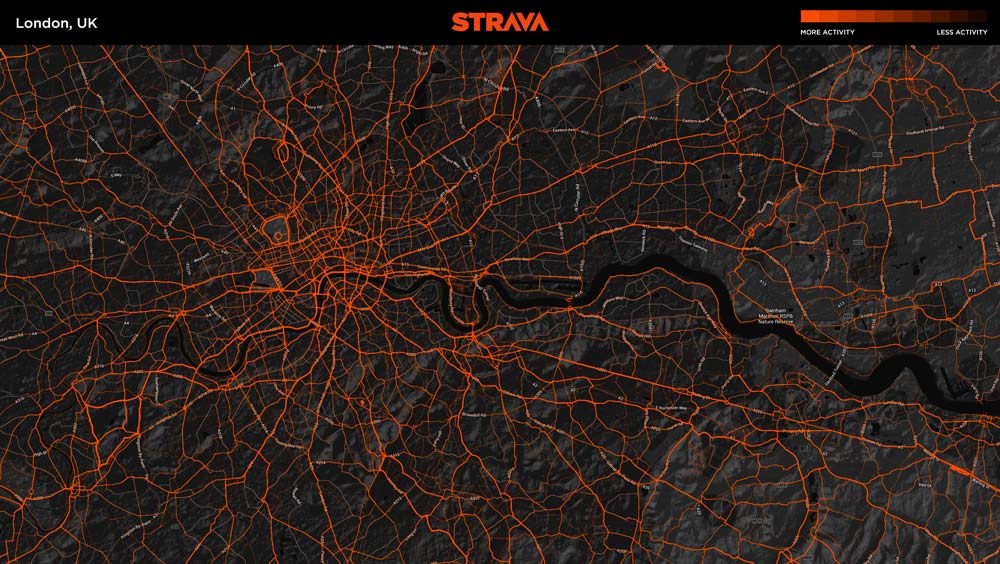Strava Metro is a new service that pulls from their database of activities, which they say is over 300 billion GPS points and growing, to give cycling advocacy groups and government organizations better insight into where people are biking in their cities. The goal is to help them make better informed decisions about alternative transpiration infrastructure like bike lanes.
Perfect timing since next week is Bike To Work Week, which should provide a bit more data on how less avid cyclists might contribute to the load. Shown here are “heatmap” visualizations of Metro data for SF, NYC and London, illustrating the available data for some of the largest cities in the world.
Full PR at bottom…
PRESS RELEASE: Strava, the online network connecting the global community of athletes, has announced Strava Metro, a new service that allows insight and analysis of bicycling routes and commute patterns around the world. The service empowers advocacy organizations and government agencies to understand cycling activity in local communities and make better-‐informed decisions when planning, maintaining, and upgrading bicycling infrastructure.
Strava Metro leverages the activity uploads of millions of Strava members worldwide, anonymized and aggregated to protect privacy, to bring the process of collecting cycling traffic data into the digital age. With more than 2.5 million new GPS-‐tracked activities added each week, Strava’s data set of over 300 billion GPS points offers an entirely new way of understanding and analyzing cycling traffic at a local level.
“Bicycling safety is a top concern to our members worldwide, especially when they’re riding through metropolitan areas with a high concentration of motor vehicle traffic,” said Michael Horvath, co-‐founder and president at Strava. “Strava Metro delivers an innovative way for us to serve Strava members and non‐members alike by helping to make their daily commutes and weekend rides smoother and safer.”
Organizations in the following areas are currently analyzing data from Strava Metro including the Oregon Department of Transportation and the cities of Alpine Shire, Australia; Arlington, Va.; Glasgow, Scotland; London, England and Orlando, Fla.
“Our goal is to provide a safe, efficient transportation system in Oregon which includes sustainable transportation options such as bicycling, walking and taking public transit,” said Margi Bradway, active transportation policy lead at Oregon Department of Transportation. “Strava Metro data will help us understand how and where cyclists are riding in Oregon, a critical component to evaluating the transportation system and planning for the future.”
Strava Metro is available today. Advocacy organizations and the general public can access high‐resolution heat map visualizations of the data free of charge.Organizations seeking deeper insight and analysis will be able to license Strava Metro data sets for use with geographic information systems (GIS) mapping software. Pricing is based on the number of Strava members in the requested geographic area. To learn more about Strava Metro visit metro.strava.com.


